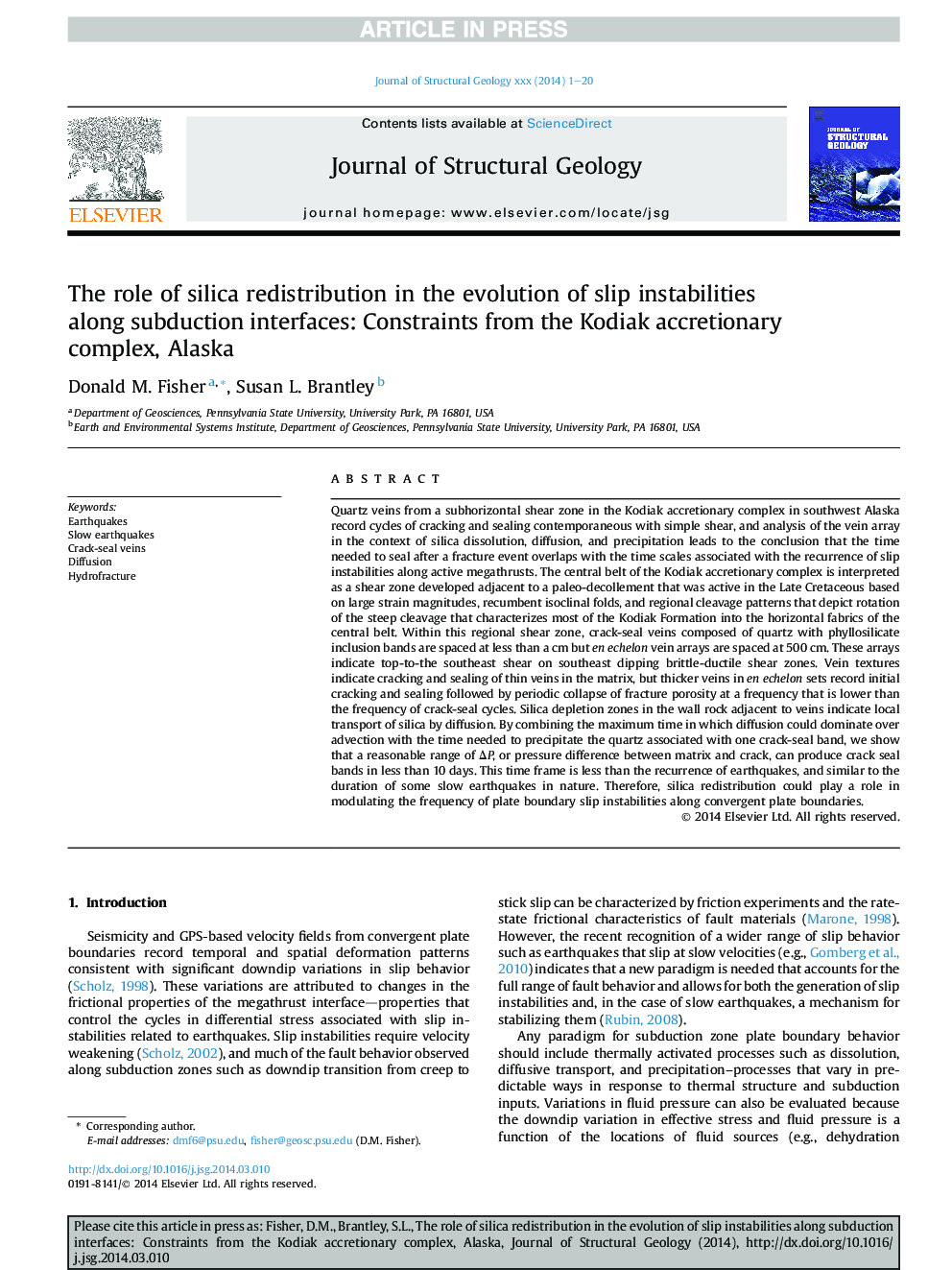| Article ID | Journal | Published Year | Pages | File Type |
|---|---|---|---|---|
| 6444916 | Journal of Structural Geology | 2014 | 20 Pages |
Abstract
Quartz veins from a subhorizontal shear zone in the Kodiak accretionary complex in southwest Alaska record cycles of cracking and sealing contemporaneous with simple shear, and analysis of the vein array in the context of silica dissolution, diffusion, and precipitation leads to the conclusion that the time needed to seal after a fracture event overlaps with the time scales associated with the recurrence of slip instabilities along active megathrusts. The central belt of the Kodiak accretionary complex is interpreted as a shear zone developed adjacent to a paleo-decollement that was active in the Late Cretaceous based on large strain magnitudes, recumbent isoclinal folds, and regional cleavage patterns that depict rotation of the steep cleavage that characterizes most of the Kodiak Formation into the horizontal fabrics of the central belt. Within this regional shear zone, crack-seal veins composed of quartz with phyllosilicate inclusion bands are spaced at less than a cm but en echelon vein arrays are spaced at 500Â cm. These arrays indicate top-to-the southeast shear on southeast dipping brittle-ductile shear zones. Vein textures indicate cracking and sealing of thin veins in the matrix, but thicker veins in en echelon sets record initial cracking and sealing followed by periodic collapse of fracture porosity at a frequency that is lower than the frequency of crack-seal cycles. Silica depletion zones in the wall rock adjacent to veins indicate local transport of silica by diffusion. By combining the maximum time in which diffusion could dominate over advection with the time needed to precipitate the quartz associated with one crack-seal band, we show that a reasonable range of ÎP, or pressure difference between matrix and crack, can produce crack seal bands in less than 10 days. This time frame is less than the recurrence of earthquakes, and similar to the duration of some slow earthquakes in nature. Therefore, silica redistribution could play a role in modulating the frequency of plate boundary slip instabilities along convergent plate boundaries.
Related Topics
Physical Sciences and Engineering
Earth and Planetary Sciences
Geology
Authors
Donald M. Fisher, Susan L. Brantley,
